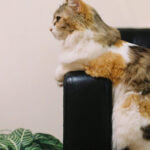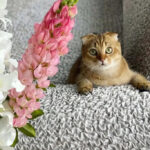If you’re captivated by the allure of the wild but cherish the companionship of a domestic feline, the Bengal cat might be your purrfect match. Bred to resemble the exotic beauty of a leopard, Bengal cats possess the loving and manageable temperament of a house cat. Let’s delve into the fascinating world of this captivating breed.
Tracing the Origins: The History of Bengal Cats
The Bengal cat stands out as a hybrid breed, a deliberate mix of domestic cats and the Asian leopard cat (ALC), a small, wild cat species native to the lush landscapes of Southeast Asia. The story began in the early 20th century when initial crosses were made, but it wasn’t until the 1970s that the Bengal breed truly took form, thanks to the pioneering efforts of Jean Sugden Mill. Mill’s vision was to create a cat that embodied the striking appearance of the ALC – scientifically known as Prionailurus bengalensis, hence the name “Bengal” – with the gentle disposition of a domestic pet. Asian Leopard cats are admired for their slender physique and distinctly wild aesthetic.
While the initial hybridization attempts occurred over a century ago, it was Mill’s dedicated breeding program in the 1970s, combining ALC hybrids with various domestic breeds, that solidified the Bengal as we know it today. Her aim was clear: to maintain the exotic charm of the Asian leopard cat while ensuring a domesticated personality suitable for family life.
Modern Bengal kittens are generations removed from their wild ancestors, bred exclusively from other Bengals. This selective breeding has refined the breed, making them a popular, albeit often expensive cat breed. A Bengal cat of show quality can command prices reaching upwards of $2,000, reflecting their desirable traits and the dedication of Bengal breeders.
The Striking Look: Appearance of Bengal Cats
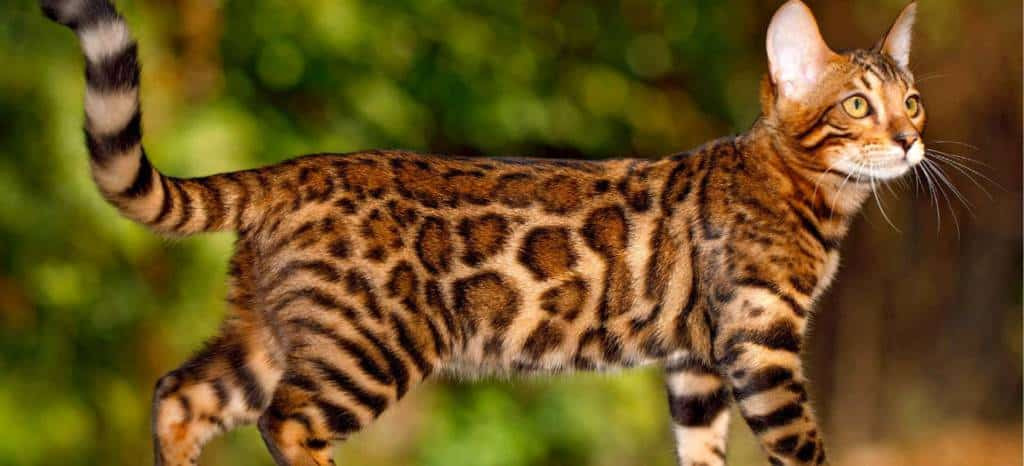 A Bengal cat with a distinctive spotted coat sits alertly on a wooden surface, showcasing its wild appearance.
A Bengal cat with a distinctive spotted coat sits alertly on a wooden surface, showcasing its wild appearance.
Bengal cats are immediately recognizable for their wild cat aesthetic and signature markings. Their bodies are muscular and athletic, supported by long hind legs that give them a powerful and graceful movement. Their coats are sleek and close-lying, and their ears are rounded at the tips, all echoing their wild ancestry. The leopard-like appearance is a hallmark of the breed, yet within Bengals, there is delightful diversity in coat and eye color.
Coat Color and Patterns
The Bengal coat is a marvel – soft, sleek, and surprisingly low-maintenance. They exhibit two primary coat patterns: spotted and marbled. Spotted Bengals display rosettes or spots reminiscent of leopards or jaguars, while marbled Bengals have swirling patterns that are equally captivating. Standard coat colors include brown, snow (ranging from ivory to cream), and silver. Beyond these, you can find Bengals in non-standard colors such as charcoal, blue, and the striking melanistic (solid black). Snow Bengals owe their lighter coats to a form of albinism inherited from their Siamese and Burmese lineage.
An enchanting feature found in some Bengal cats is a “glitter” coat. This shimmering effect is caused by translucent, hollow hairs that capture and reflect light, giving the coat an almost sparkling appearance, noticeable even in dim lighting.
Eye Color Variations
Bengal cats possess almond-shaped eyes that contribute to their captivating gaze. Eye colors range across a spectrum of hazel, brown, green, gold, and copper. Snow Bengals, in contrast, often have striking blue, blue-green, or aqua eyes, adding to their unique appeal.
Health and Vital Statistics: Biology & Health of Bengal Cats
Bengal cats are generally robust and healthy cats, but like all breeds, they have predispositions to certain health conditions:
- Distal Neuropathy: A neurological disorder that can lead to muscle weakness.
- Flat-Chested Kitten Syndrome: A developmental issue with varying degrees of severity. Kittens who survive to adulthood typically show no lasting effects.
- Hip Dysplasia: While more commonly associated with large dog breeds, Bengals can also experience hip dysplasia, potentially causing lameness.
- Hypertrophic Cardiomyopathy (HCM): A form of heart disease that is seen in various cat breeds.
- Patellar Luxation: A hereditary condition involving the dislocation of the kneecap. Surgery may be required in severe cases.
- Progressive Retinal Atrophy (PRA): A degenerative eye disease that can lead to vision loss.
Weight and Body Condition
Bengals are medium-sized cats, but their muscular and elongated bodies can make them appear larger than they actually are. Females typically weigh from 6 pounds upwards, while males can reach around 15 pounds.
Their high energy levels contribute to their ability to maintain a healthy weight. To support their active lifestyle and obligate carnivore nature, it’s crucial to feed Bengals a diet of high-quality cat food made with minimally processed, meat-rich ingredients that align with their obligate carnivore dietary needs.
Life Expectancy
Bengal cats generally enjoy a good lifespan. CatTime estimates their average lifespan to be between 10 and 16 years. Factors like overall health, diet, and whether they live indoors or outdoors significantly influence their longevity.
Living with a Bengal: Personality and Temperament
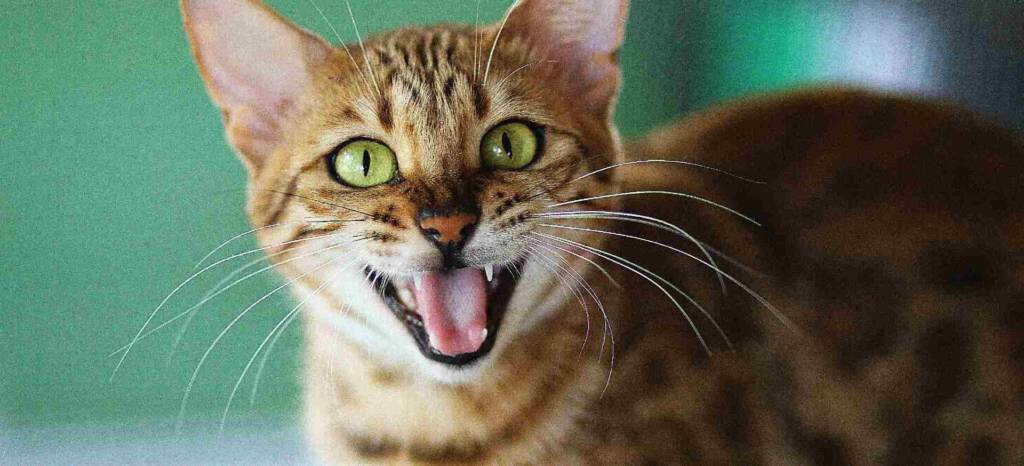 A playful Bengal cat with a spotted coat interacts with a human hand, demonstrating its affectionate and interactive nature.
A playful Bengal cat with a spotted coat interacts with a human hand, demonstrating its affectionate and interactive nature.
Despite their wildcat looks, Bengal cats are known for their affectionate and sociable personalities, often forming strong bonds with their families.
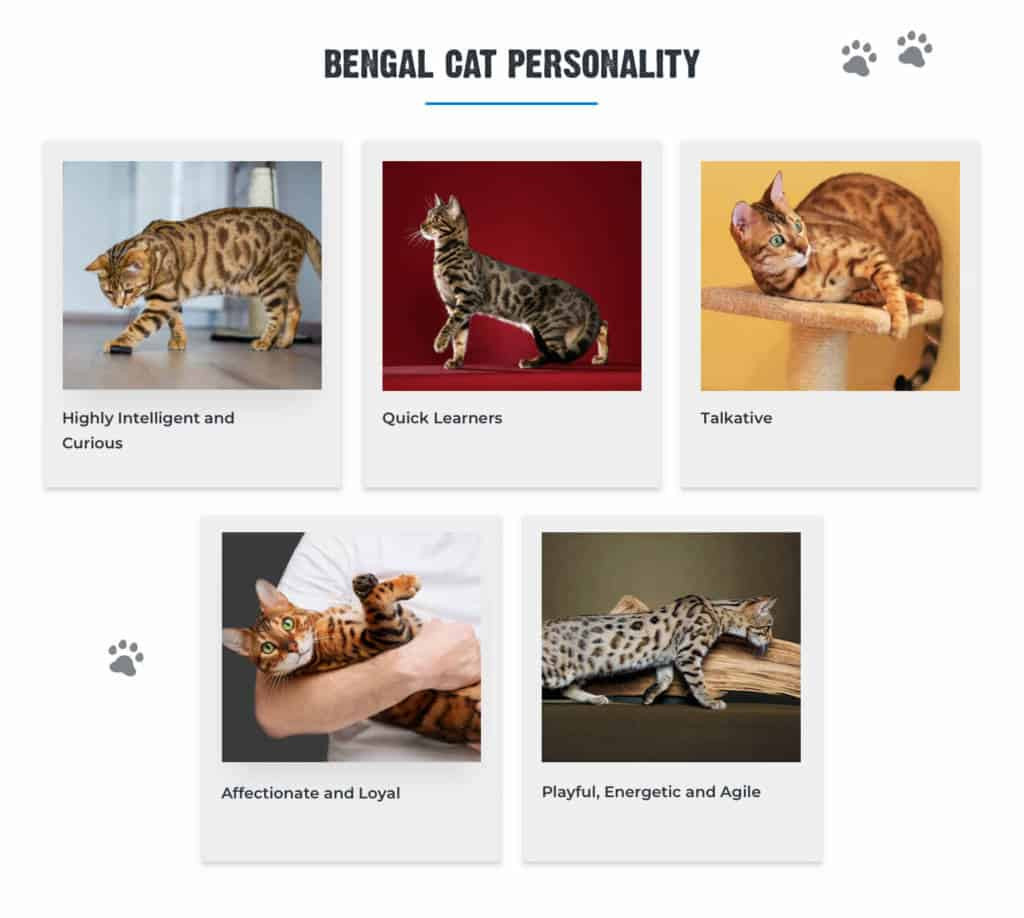 A graphic outlining Bengal cat personality traits, highlighting their intelligence, activity level, loyalty, and love for climbing and water.
A graphic outlining Bengal cat personality traits, highlighting their intelligence, activity level, loyalty, and love for climbing and water.
Bengal cats are intensely loyal to their human companions. However, their independent nature means they may not appreciate being constantly held or restrained. Their remarkable intelligence makes them highly trainable; some Bengals can even be taught complex tricks like using a toilet.
Brimming with energy and athleticism, Bengal cats thrive in environments where they can climb, explore, and play. They are known for their love of heights and even have a fascination with water, unlike many domestic cats. Providing a tall cat tree and a variety of stimulating toys is essential to keep a Bengal cat happy and entertained, catering to both their physical and mental needs.
Discover More: Fun Facts About Bengal Cats
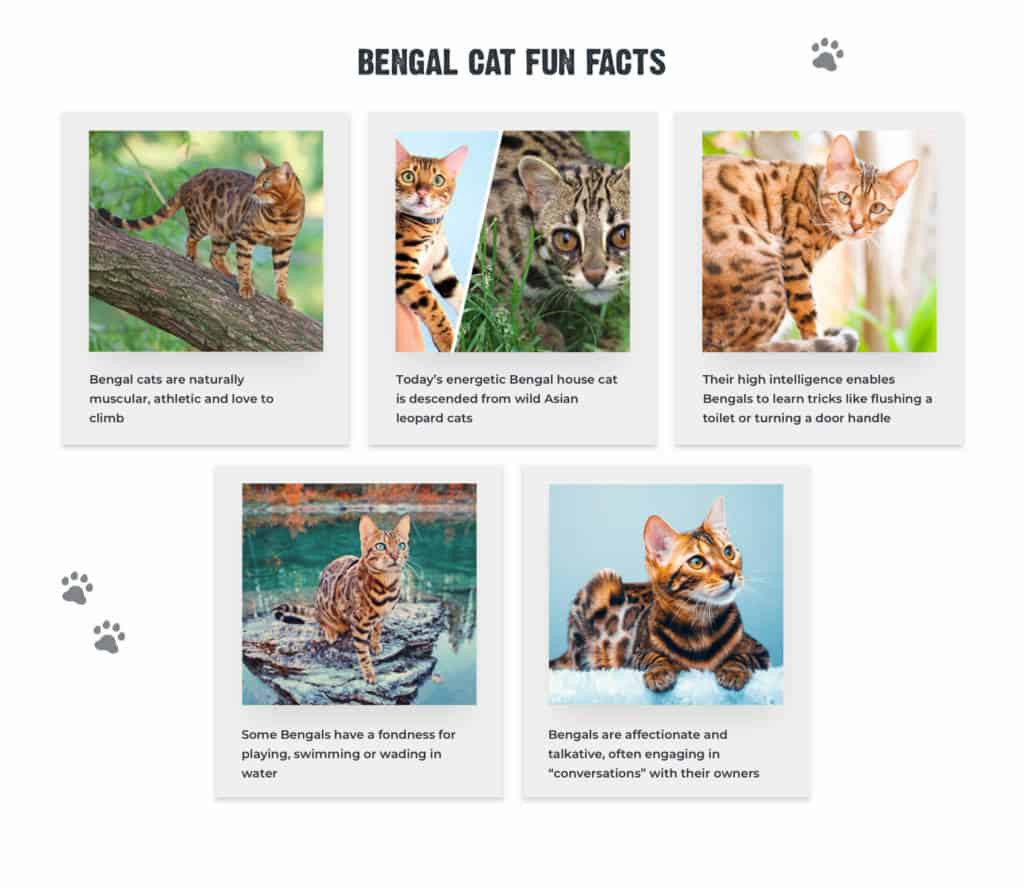 A collection of fun facts about Bengal cats presented graphically, including their love for water, dog-like loyalty, and vocal nature.
A collection of fun facts about Bengal cats presented graphically, including their love for water, dog-like loyalty, and vocal nature.
Common Queries: Frequently Asked Questions about Bengal Cats
Q: Are Bengal cats hypoallergenic?
A: As PetHelpful rightly points out, truly hypoallergenic cats don’t exist. However, Bengal cats are known to shed less than many other breeds. This reduced shedding might mean allergy sufferers experience milder symptoms compared to other cats.
Q: Do Bengal cats get along well with children and other pets?
A: CatTime notes that the active and sociable Bengal is often an excellent choice for families with children and homes with cat-friendly dogs. Nevertheless, it’s crucial to supervise interactions with smaller pets like hamsters, rabbits, or guinea pigs, as their prey drive might be triggered.
Interested in learning more about similar breeds? You might also find these feline companions intriguing:

